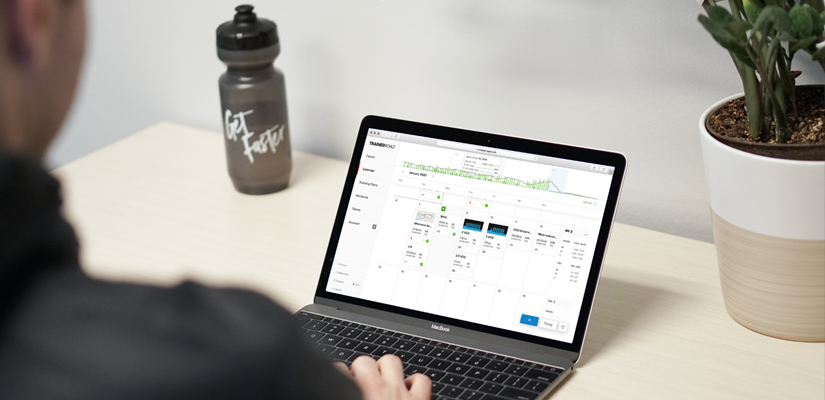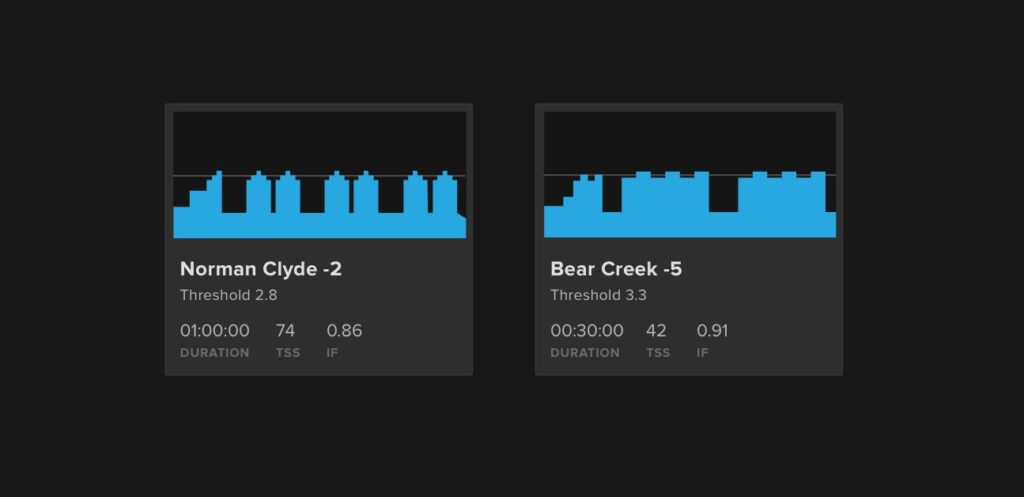How to Use Training Stress

TSS can be very informative when used in conjunction with performance and other training metrics, and measuring it is easier than you think.
For more training tips and information on other topics check out the Ask a Cycling Coach Ep 202.
What is TSS?
TSS, short for training stress score, is a measurement of the stress incurred on your body from training. When you train with a power meter, or smart trainer, this score is calculated using the power data from your workout. When you train without a power source or complete a non-cycling activity, TrainerRoad estimates your TSS using time and perceived intensity.
You can track your TSS week to week, training block to training block, and season to season, all within TrainerRoad. The TSS Chart in your TrainerRoad Calendar shows you how much TSS is completed indoors, outdoors, and during non-cycling activities each week.
As you progress through your training plan and collect data, variations and patterns in TSS will become apparent. With a thorough understanding of TSS, and how it affects you physically, you can use this data to make adjustments to your training.
What Does TSS Actually Tell You?
The number alone doesn’t tell you everything you need to know about your workout because not all training stress is created equal. Think of TSS as total revenue for a company; while it lets you know how much money the company brought in, it doesn’t tell you where each individual dollar came from and how it was earned.
Similarly, the strain put on your body changes depending on the type of work completed, your level of fatigue throughout the workout, and your current fitness.
The same goes for adaptations. A Sweet Spot workout that has the same amount of TSS as a VO2 Max workout won’t necessarily achieve the same adaptations. Because the adaptations are not the same one workout can feel much harder than another.
To learn more about sweet spot training, read our article: Sweet Spot Training: Everything You Need to Know
Why isn’t weekly TSS always increasing?
The goal in any high quality training plan is not to make you accumulate as much TSS as possible. Every bit of work you do needs to be offset by proper recovery.
Workweeks increase the workload gradually and strategically. This steady rise in TSS indicates a gradual and sustainable ramp in stress on your body. However, while your training plan does ramp up, you can only ramp up training stress for so long before it actually becomes counterproductive.
In order to maintain the productivity of your training plan, and give your body a chance to mend, TSS needs to intermittently drop. Recovery weeks and workouts offer relief from the training stress incurred during the rest of the training block. This balance between building and lowering TSS is what allows your body to recover and reap the benefits of your hard work.
What Can I Do With My TSS Data?
Your physical response to training stress tells you much more about your training load than the number by itself. By tracking TSS in conjunction with your physical performance, you can learn more about your training plan and yourself as an athlete.
To accurately utilize TSS and your weekly training stress score, use annotations in your TrainerRoad Calendar to track how you feel and ride notes to record how you perform in response to your training.
To further expand on this information, actively keep track of what you eat, how much you sleep, and anything else that can impact your response to your training load. Understanding how these variables impact your training can help you make active lifestyle improvements for future training sessions.
The more data you have, the more you learn about yourself. This will ultimately make it easier to improve the quality of your workouts and adjust your training plan when needed.
Making Adjustments Using TSS
If you follow a structured training plan and stick to the prescribed TSS, you shouldn’t need to make adjustments to your training plan often. TrainerRoad training plans are designed with the right amount of TSS to promote adaptation without causing excessive fatigue.
That’s not to say that adjustments don’t ever need to be made. Sometimes athletes are unable to sufficiently recover because they have started a plan with a volume that is too high. In other cases, athletes start off with a lower training plan but eventually need a higher training volume to promote adaptation.
The best way to adjust plan volume is to analyze your physical response to TSS. If you are failing workouts and unable to sufficiently recover this is an indication that you should try lowering your TSS with a lower plan volume. On the other hand, if you are completing workouts with ease and adding TSS on a weekly basis, this is a good indication that you should increase your plan volume.
If you still aren’t getting enough TSS because the individual workouts are not demanding you might need to raise your FTP. An FTP that is too low will make your TSS values artificially inflated. The same goes for workouts that are too difficult. If you can’t hit your power targets, even when you go into workouts fully rested this is an indication that your FTP is too high.
When you make an adjustment to your FTP or training volume, continue to keep notes on your physical response to the adjusted training load. Remember that your training plan should be challenging but also doable.
The Benefits of Tracking TSS
Every athlete responds to training stress differently. Knowing how your performance changes in relation to variations in TSS can be incredibly valuable when it comes to adjusting and understanding your training load. As you collect data and learn more about how you physically respond to different training, you can make efficient and effective adjustments to your training load.
For more cycling training knowledge, listen to the Ask a Cycling Coach — the only podcast dedicated to making you a faster cyclist. New episodes are released weekly.
